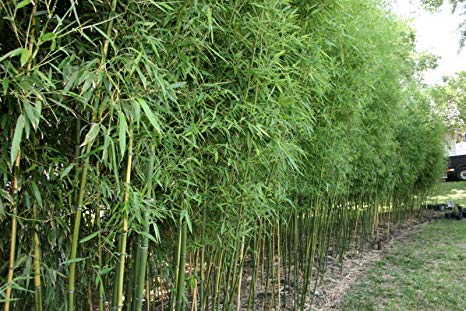BAMBUSA Bambos is a genus of tropical and subtropical clumping bamboo, usually giant, with numerous branches at a node, one or two much larger than the rest. Giant thorny.
A fast-growing species. Thick-walled, but soft.
Lower branches are long, wiry, and armed with thorns. Edible shoots.
Culm / color Erect / light green
Height / diameter up to 30 m / 15 – 18 cm
Thickness / Internode very thick 2 cm / 20 – 40 cm
Leaf length / branch 6 – 22 cm / spine-like
Altitude / soil 0 – 1.200 m, moist condition
Weather / rainfall Tropical humid / up to 1.000 mm
Usage Young shoots, forage, flooring,roofing, scaffolding, pulp & paper,ply-bamboo, ladders, wax sealing. (from young shoot), medicine.
Natural fence.
Planting For wind breaks, along rivers.
Plantation 400 plants/Ha. For fence 2 – 3 meter
Culms: The fast growing, strong woody culms of Bambusa bambos have an average diameter between 10-18 cm, and are between 20-30 m tall (although the tallest recorded culm measured 40 m).
Habitat: Bambusa bambos prefers a humid tropical climate and grows best along river banks or river valleys with a rich, moist soil. It reaches its best development in moist deciduous forests up to an altitude of 1,250 m and receiving nearly 2,000-2,500 mm rainfall a year. In flat alluvial soil, the culms are reported to attain a height of 25-30 m and a diameter of 20-25 cm
thorns
x

